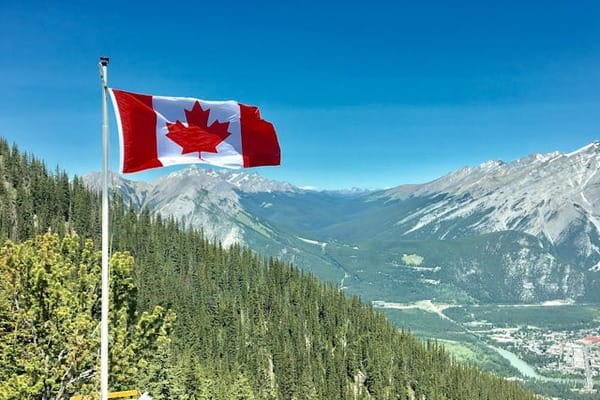Canada is intensifying its Arctic strategy in response to escalating geopolitical tensions and the region’s rapid transformation due to climate change. On Friday, the Canadian government released a 37-page security policy outlining plans to bolster its military and diplomatic presence in the Arctic, citing growing concerns over Russian and Chinese activities. The document emphasizes that Canada’s enhanced Arctic presence is aimed at addressing security challenges posed by both countries. It highlights increased Russian military activity along the edges of North American airspace, including weapons testing and the deployment of missile systems capable of striking both North America and Europe, which Canada describes as “deeply troubling.” Additionally, Canada accuses China of deploying vessels equipped with dual-use military and research capabilities in the Arctic, allegedly to collect data in the region.
For years, Ottawa has aimed to manage the Arctic through cooperative efforts with other states, striving to keep the region free of military competition. However, Foreign Affairs Minister Melanie Joly acknowledged that the mechanisms preventing conflict are under increasing strain, noting, “The Arctic is no longer a low-tension region.” Canada’s new Arctic strategy includes several key initiatives, such as establishing consulates in Anchorage, Alaska, and Nuuk, Greenland, as well as appointing an ambassador to coordinate Canada’s Arctic policies.
The Arctic region is home to Indigenous communities like the Inuit, Sami, and Chukchi, who have lived there for millennia. Canada’s military upgrades could include deploying new patrol ships, navy destroyers, icebreakers, submarines capable of operating under ice, and more aircraft and drones. Minister of National Defence Bill Blair emphasized that Canada’s updated defense doctrine calls for strengthening military capabilities to operate in the Arctic’s harsh conditions, which include extreme cold, unpredictable storms, long periods of darkness, and drifting sea ice. The Arctic, which surrounds the North Pole, is defined by the Arctic Circle and spans across eight countries: Canada, Russia, the United States, Greenland, Norway, Sweden, Finland, and Iceland.
Canada’s Arctic region covers over 4.4 million square kilometers and remains sparsely populated, with few ports or communities. Less than 16 percent of the waters—encompassing parts of the Arctic Ocean, Barents Sea, Greenland Sea, and Chukchi Sea—have been adequately surveyed. The United States, a key ally of Canada, plays a crucial role in Arctic defense, working closely with Canada on modernizing continental defenses, including investments in new maritime sensors and satellite surveillance. Nordic countries, many of which are NATO members, are also increasing their Arctic presence, often collaborating on military exercises. Western nations engage in various activities in the Arctic, from military deployments to resource exploration.
Russia has significantly expanded its naval presence in the Arctic, deployed missile systems, and ramped up weapons testing. Meanwhile, China has increased its activity, sending dual-purpose vessels that serve both military and research functions. These vessels collect oceanographic data, which could enhance China’s military capabilities in undersea warfare. A 2018 report revealed that China’s civilian research fleet, the largest in the world, ostensibly conducts scientific research but also gathers data that supports China’s military interests. China’s Arctic policy aims to “understand, protect, develop, and participate in the governance of the Arctic,” and the country seeks to make the Northern Sea Route, which links Eurasia to the Asia-Pacific, a viable shipping lane to reduce maritime travel times.
China and Russia have also collaborated on infrastructure projects like the Polar Silk Road, driven by the growing congestion and security challenges faced by traditional shipping routes like the Suez Canal. As climate change accelerates, the Arctic is rapidly warming, making it more accessible for trade and resource exploration, attracting countries like China and India, which are not Arctic nations.
India, for example, announced its Arctic policy in March 2022, and in recent months, New Delhi and Moscow have discussed expanding their cooperation in the region, particularly regarding the use of the Northern Sea Route for shipping oil from Russia to India. European powers, including France, Germany, and the United Kingdom, have also updated their Arctic policies in recent years, seeking a greater role in the region. The Arctic holds vast reserves of oil, gas, and critical minerals, such as rare earth elements and lithium, which are essential for electric vehicles and battery production, making it a key area for both clean energy and fossil fuel exploration.
The region’s increasing military presence raises the stakes for territorial claims and influence, heightening the risk of conflict. While the Arctic has historically been managed through cooperative frameworks, such as the Arctic Council, these frameworks are under strain. The Arctic Council, established in 1996 to promote cooperation among Arctic states and Indigenous communities, explicitly excludes military security from its mandate. However, Russia’s invasion of Ukraine has disrupted the Council’s operations, leading the seven other member states to suspend cooperation with Russia in March 2022. While some limited cooperation resumed in June 2023 on specific projects, Russia remains excluded.
Moreover, increased military activity, resource extraction, and shipping could harm the fragile Arctic ecosystem, which is already suffering from climate change. A report from the Arctic Council in January revealed a 37 percent increase in shipping in Arctic waters over the past decade, raising concerns about oil spills, air pollution, chemical contamination, and disturbances to marine life. Military operations and infrastructure development, such as icebreaking, disrupt sea ice habitats, threatening species like polar bears and seals. As geopolitical competition intensifies in the Arctic, the region faces a complex balance between security, environmental protection, and resource development.



